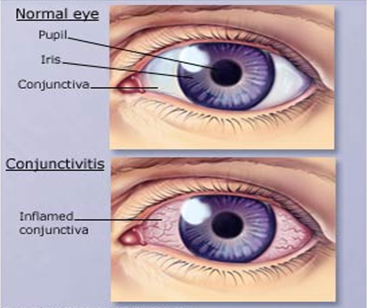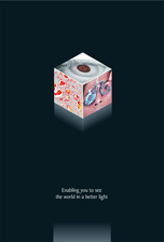About Eye - Conjunctivitis
Redness, burning , foreign- body sensation and discharge from the eyes with or without swelling on the eyelids. Symptoms maybe severe in diabetic and immunocompromised patients.Can involve 1 or both eyes- either simultaneously or one after the other with a gap of few hrs to few days
How is it caused
self- limiting, infective condition , caused by touching or rubbing eyes by contaminated hands, closed environment, working in close proximity with a patient of conjunctivitis, through use of handkerchiefs and napkins contaminated by discharge from patientís eyes
How to prevent
- Avoid touching or rubbing eyes repeatedly
- Wash hands regularly and maintain hygiene
- Avoid sharing napkins and handkerchiefs with patients as these act as fomites
- Avoid working in closed humid environments with infected patients
- Avoid close contact with infants and children as they are prone to catch the infection faster.
How to treat
- Visit your ophthalmologist
- Avoid over-the-counter drugs as these may contain molecules which aggravate the condition
- Wash your eyes frequently throughout the day as it avoids buildup of discharge and infective organisms in the eye which may delay recovery
- Put eyedrops as advised by your ophthalmologist
- Avoid touching the nozzle of the dispenser to the eyes while putting the drops as this can contaminate the bottle and increase the chances of infection in the other eye.
- Do not share the bottle of eyedrops even if both the patients have similar infection and even if both the patients have been prescribed the same medication. Use separate bottle for all the patients

News & Events
Akshar eye clinic proudly acounces the addition of new machine that is Zeiss FDT( Frequency doubling technolgy )Perimetry. The instrument is designed for fast and effective detection of visual loss. Which one of the few ophthalmologist have.
Seasonal Disease
Allergic conjunctivitis or spring catarrh is a very common seasonal disorder in children between 5 - 15 years of age. The disorder can only be suppressed. Cure cannot be offered.Download Brochure








